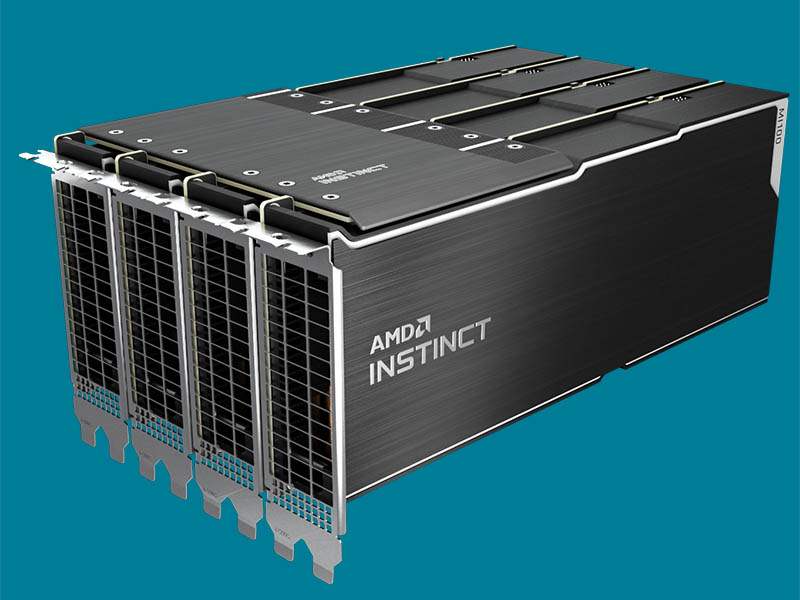- Joined
- Oct 9, 2007
- Messages
- 47,901 (7.37/day)
- Location
- Dublin, Ireland
| System Name | RBMK-1000 |
|---|---|
| Processor | AMD Ryzen 7 5700G |
| Motherboard | Gigabyte B550 AORUS Elite V2 |
| Cooling | DeepCool Gammax L240 V2 |
| Memory | 2x 16GB DDR4-3200 |
| Video Card(s) | Galax RTX 4070 Ti EX |
| Storage | Samsung 990 1TB |
| Display(s) | BenQ 1440p 60 Hz 27-inch |
| Case | Corsair Carbide 100R |
| Audio Device(s) | ASUS SupremeFX S1220A |
| Power Supply | Cooler Master MWE Gold 650W |
| Mouse | ASUS ROG Strix Impact |
| Keyboard | Gamdias Hermes E2 |
| Software | Windows 11 Pro |
AMD Instinct MI200 will be an important product for the company in the HPC and AI supercomputing market. It debuts the CDNA2 compute architecture, and is based on a multi-chip module (MCM) codenamed "Aldebaran." PC enthusiast Locuza, who conjures highly detailed architecture based on public information, imagined what "Aldebaran" could look like. The MCM contains two logic dies, and eight HBM2E stacks. Each of the two dies has a 4096-bit HBM2E interface, which talks to 64 GB of memory (128 GB per package). A silicon interposer provides microscopic wiring among the ten dies.
Each of the two logic dies, or chiplets, has sixteen shader engines that have 16 compute units (CU), each. The CDNA2 compute unit is capable of full-rate FP64, packed FP32 math, and Matrix Engines V2 (fixed function hardware for matrix multiplication, accelerating DNN building, training, and AI inference). With 128 CUs per chiplet, assuming the CDNA2 CU has 64 stream processors, one arrives at 8,192 SP. Two such dies add up to a whopping 16,384, more than three times that of the "Navi 21" RDNA2 silicon. Each die further features its independent PCIe interface, and XGMI (AMD's rival to CXL), an interconnect designed for high-density HPC scenarios. A rudimentary VCN (Video CoreNext) component is also present. It's important to note here, that the CDNA2 CU, as well as the "Aldebaran" MCM itself, doesn't have a dual-use as a GPU, since it lacks much of the hardware needed for graphics processing. The MI200 is expected to launch later this year.

View at TechPowerUp Main Site
Each of the two logic dies, or chiplets, has sixteen shader engines that have 16 compute units (CU), each. The CDNA2 compute unit is capable of full-rate FP64, packed FP32 math, and Matrix Engines V2 (fixed function hardware for matrix multiplication, accelerating DNN building, training, and AI inference). With 128 CUs per chiplet, assuming the CDNA2 CU has 64 stream processors, one arrives at 8,192 SP. Two such dies add up to a whopping 16,384, more than three times that of the "Navi 21" RDNA2 silicon. Each die further features its independent PCIe interface, and XGMI (AMD's rival to CXL), an interconnect designed for high-density HPC scenarios. A rudimentary VCN (Video CoreNext) component is also present. It's important to note here, that the CDNA2 CU, as well as the "Aldebaran" MCM itself, doesn't have a dual-use as a GPU, since it lacks much of the hardware needed for graphics processing. The MI200 is expected to launch later this year.

View at TechPowerUp Main Site





